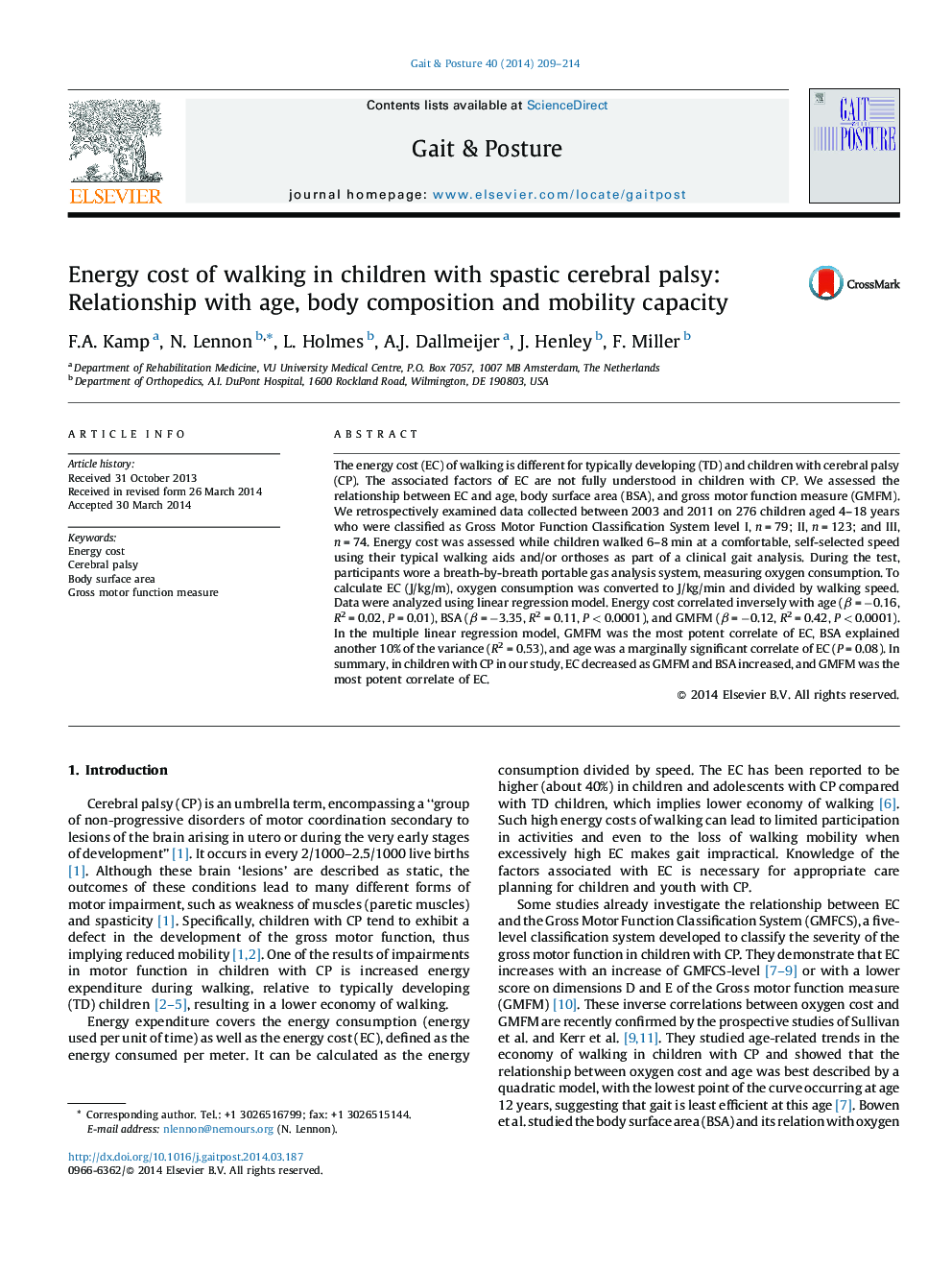| کد مقاله | کد نشریه | سال انتشار | مقاله انگلیسی | نسخه تمام متن |
|---|---|---|---|---|
| 6206506 | 1265647 | 2014 | 6 صفحه PDF | دانلود رایگان |
- Potential associated factors of EC are not fully understood in children with CP.
- EC inversely correlates with GMFM and BSA, explaining 53% of its variance.
- Of these correlates, gross motor capacity explains the largest proportion of EC.
The energy cost (EC) of walking is different for typically developing (TD) and children with cerebral palsy (CP). The associated factors of EC are not fully understood in children with CP. We assessed the relationship between EC and age, body surface area (BSA), and gross motor function measure (GMFM). We retrospectively examined data collected between 2003 and 2011 on 276 children aged 4-18 years who were classified as Gross Motor Function Classification System level I, n = 79; II, n = 123; and III, n = 74. Energy cost was assessed while children walked 6-8 min at a comfortable, self-selected speed using their typical walking aids and/or orthoses as part of a clinical gait analysis. During the test, participants wore a breath-by-breath portable gas analysis system, measuring oxygen consumption. To calculate EC (J/kg/m), oxygen consumption was converted to J/kg/min and divided by walking speed. Data were analyzed using linear regression model. Energy cost correlated inversely with age (β = â0.16, R2 = 0.02, P = 0.01), BSA (β = â3.35, R2 = 0.11, P < 0.0001), and GMFM (β = â0.12, R2 = 0.42, P < 0.0001). In the multiple linear regression model, GMFM was the most potent correlate of EC, BSA explained another 10% of the variance (R2 = 0.53), and age was a marginally significant correlate of EC (P = 0.08). In summary, in children with CP in our study, EC decreased as GMFM and BSA increased, and GMFM was the most potent correlate of EC.
Journal: Gait & Posture - Volume 40, Issue 1, May 2014, Pages 209-214
